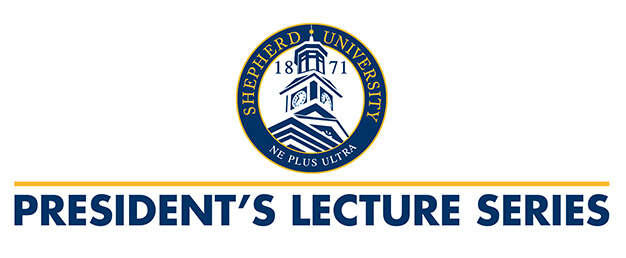President’s Lecture Series Fall 2018

Dr. Mary J.C. Hendrix, president of Shepherd University, has created this lecture series as part of the Lifelong Learning Program. The lectures are free to the public with advanced registration as seating is limited.
FALL 2018 LECTURES
All lectures will be held at 6:30 p.m. in the Robert C. Byrd Center for Congressional History and Education Auditorium.
PHOTOBIOMODULATION THERAPY (PBMT): WHAT IS IT? HOW DOES IT WORK? WHAT CAN IT DO FOR YOU?
Juanita J. Anders, Ph.D. • Tuesday, September 18
Photobiomodulation (PBM) is an emerging and rapidly expanding area of light-based photonic research and therapeutic applications (PBMT). PBMT has the potential to revolutionize modern health care. This presentation will include the basics of what PBM is, the mechanisms by which it alters physiology and response to injury and disease, and its clinical potential. The optimized dosing and device parameters will be reviewed with the goal of educating the audience to make wise decisions in choosing a device or treatment and avoid fraudulent instruments and practitioners. Juanita Anders is internationally recognized as an expert in Photobiomodulation research and has served as invited Chair and speaker globally. Her specialty is peripheral and central nervous system injury and repair mechanisms, and light tissue interactions. Dr. Anders received her Ph.D. in Anatomy from the University of Maryland Medical School then joined the National Institutes of Health in the Laboratory of Neuropathology and Neuroanatomical Sciences, NINDS. She is affiliated with the Uniformed Services University of the Health Sciences as a Professor of Anatomy, Physiology and Genetics and Professor of Neuroscience.
IRAQ AND THE POLITICS OF OIL: AN INSIDER’S PERSPECTIVE
Gary Vogler • Tuesday, October 23
Gary Vogler, a 1973 graduate of West Point Military Academy, joined Mobil Oil Corporation and later ExxonMobil after serving in the army. He left ExxonMobil in early 2002 and worked at the Pentagon seven months later. Vogler went into Iraq with the initial U.S. military elements as a civilian oil advisor and helped lead the efforts to restore the Iraq’s oil industry after the second Gulf War. Vogler will discuss the restoration activities over the many years of his involvement on the ground in Iraq. He will lay out numerous facts that over time led him to a conclusion about the real agenda which has never been voiced by our government leaders and had nothing to do with a threat posed by Saddam or the interests of the United States. Why did we go to war ? It’s been obvious for a long time that there were no weapons of mass destruction. That was all a smokescreen. It wasn’t to enrich major oil companies; fortunately, Vogler and others in key roles on the ground would have walked away if they sensed anything along those lines.
LYME DISEASE
Roberta Lynn DeBiasi, Ph.D. • Monday, November 12
Lyme disease is caused by bacteria and is transmitted to humans through the bite of infected blacklegged ticks. If the wound left untreated, infection can spread to joints, the heart, and the nervous system. Lyme disease is diagnosed based on symptoms, physical findings, and the possibility of exposure to infected ticks. Roberta Lynn DeBiasi, chief of the Division of Pediatric Infectious Diseases at Children’s National Health System, professor of pediatrics and microbiology, immunology and tropical medicine at George Washington University School of Medicine, and principal investigator in the Center for Translational Science at Children’s Research Institute, will cover the aspects of lyme disease and its outcome. Her research expertise includes basic science, clinical/translational research, and severe and emerging viral infections.
A WILD SOLUTION FOR CLIMATE CHANGE
Thomas Lovejoy, Ph.D. • Tuesday, November 27
The impacts of climate change on biodiversity are ubiquitous and dangerous. Ecosystem restoration can make a significant contribution to addressing the challenge. Dr. Thomas Lovejoy, an ecologist who has worked in the Brazilian Amazon since 1965, aids in the interface of science and environmental policy. Starting in the 1970s, Lovejoy helped bring attention to the issue of tropical deforestation and in 1980 published the first estimate of global extinction rates (in the Global 2000 Report to the President). He conceived the idea for the long-term study on forest fragmentation in the Amazon (started in 1978) which is the largest experiment in landscape ecology, the Minimum Critical Size of Ecosystems project (also known as the Biological Dynamics of Forest Fragments Project). He also coined the term “biological diversity,” originated the concept of debt-for-nature swaps, and has worked on the interaction between climate change and biodiversity for more than 30 years.